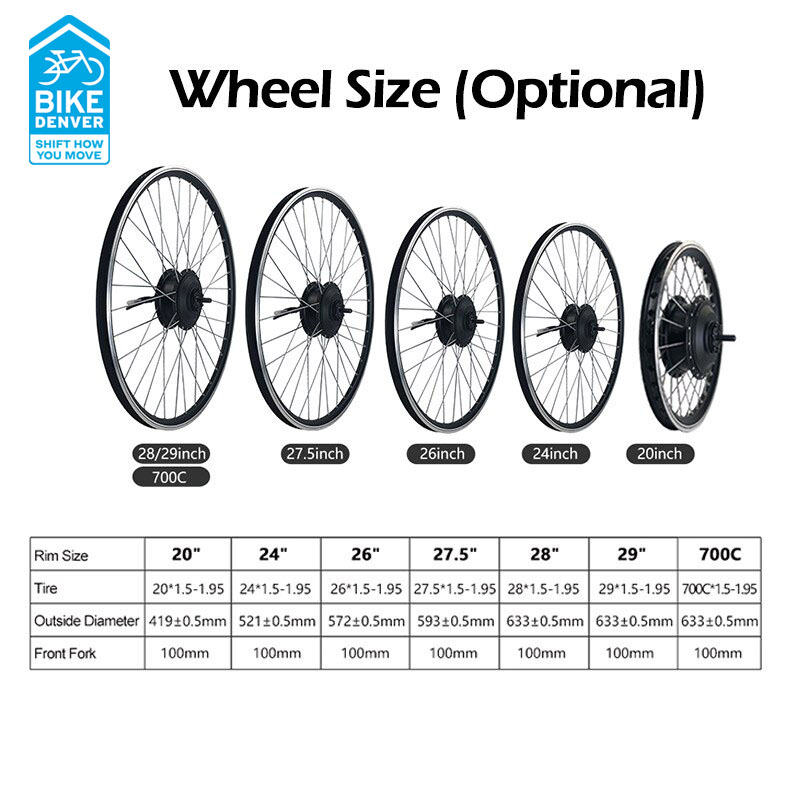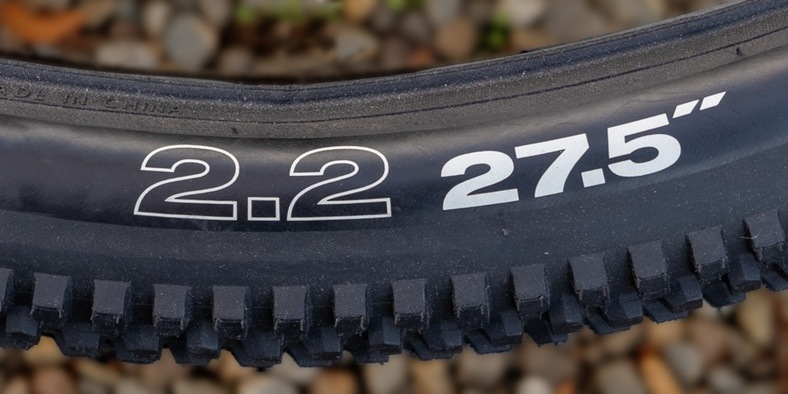Understanding the Importance of Proper Tire Sizing
When it comes to optimizing a mountain bike’s performance, one of the most critical factors to consider is the tire size. The right tire size can make all the difference in a bike’s handling, stability, and overall riding experience. A standard mountain bike tire size is essential to ensure that the bike functions as intended, providing the necessary traction, control, and comfort for riders. Choosing the correct tire size can also impact safety, as a poorly fitting tire can increase the risk of accidents and injuries.
In addition to performance and safety, proper tire sizing can also affect the bike’s geometry and overall design. A tire that is too small or too large can alter the bike’s handling characteristics, making it more difficult to control or maneuver. Furthermore, a tire that is not compatible with the bike’s wheel size can lead to premature wear and tear, reducing the tire’s lifespan and requiring more frequent replacements.
With so many different tire sizes available, it can be overwhelming for riders to determine the best option for their mountain bike. However, by understanding the importance of proper tire sizing and considering factors such as wheel size, rim width, and riding style, riders can make an informed decision and choose a tire that meets their specific needs. In the next section, we will provide a step-by-step guide on how to choose the perfect tire size for your mountain bike.
How to Choose the Perfect Tire Size for Your Mountain Bike
Choosing the right tire size for your mountain bike can be a daunting task, but by following a few simple steps, you can ensure that you select the perfect size for your needs. The first step is to determine your wheel size, as this will dictate the range of tire sizes that are compatible with your bike. Most mountain bikes have wheels that are either 26″, 27.5″, or 29″ in diameter, and each of these wheel sizes has its own corresponding tire size range.
Once you have determined your wheel size, the next step is to consider your riding style and the type of terrain you will be riding on. If you are a cross-country rider, you may prefer a smaller tire size with a narrower width, such as a 2.1″ or 2.2″ tire. On the other hand, if you are a downhill or enduro rider, you may prefer a larger tire size with a wider width, such as a 2.5″ or 2.6″ tire.
In addition to wheel size and riding style, you should also consider the rim width of your bike. A wider rim can accommodate a wider tire, but it can also affect the bike’s handling and stability. A narrower rim, on the other hand, may require a narrower tire, but it can also provide a more responsive and agile ride.
Another important factor to consider is the tire’s diameter and circumference. A larger tire diameter can provide more traction and control, but it can also increase the bike’s rolling resistance and make it more difficult to pedal. A smaller tire diameter, on the other hand, can provide less traction and control, but it can also reduce the bike’s rolling resistance and make it easier to pedal.
By considering these factors and selecting a tire size that is compatible with your wheel size, riding style, and rim width, you can ensure that you choose the perfect tire size for your mountain bike. In the next section, we will take a closer look at the standard mountain bike tire sizes and provide a comprehensive guide to help you make an informed decision.
Standard Mountain Bike Tire Sizes: A Comprehensive Guide
When it comes to choosing the right tire size for your mountain bike, it’s essential to understand the standard sizes available in the market. The most common mountain bike tire sizes are 26″, 27.5″, and 29″, each with its own corresponding wheel diameter and width. In this section, we’ll take a closer look at each of these standard sizes and explore the types of riding they’re suited for.
The 26″ tire size is one of the oldest and most traditional sizes in mountain biking. It’s commonly used on older bikes and is still popular among some riders who prefer a more agile and responsive ride. However, the 26″ tire size has largely been replaced by the 27.5″ and 29″ sizes, which offer better traction, control, and rolling resistance.
The 27.5″ tire size, also known as the “650b” size, has become increasingly popular in recent years. It offers a great balance between agility and stability, making it an excellent choice for trail and all-mountain riding. The 27.5″ size is also well-suited for riders who prefer a more aggressive riding style, as it provides excellent traction and control on technical terrain.
The 29″ tire size, also known as the “700c” size, is the largest and most popular size in mountain biking. It offers excellent rolling resistance, traction, and control, making it an excellent choice for cross-country and endurance riding. The 29″ size is also well-suited for riders who prefer a more comfortable and stable ride, as it provides a smoother ride and better absorption of bumps and vibrations.
In addition to these standard sizes, there are also several other sizes available, including the 27.5+ and 29+ sizes. These sizes offer even more traction and control than the standard sizes, making them an excellent choice for riders who prefer a more aggressive riding style or who ride on extremely technical terrain.
By understanding the standard mountain bike tire sizes and their corresponding wheel diameters and widths, riders can make an informed decision when choosing the right tire size for their bike. In the next section, we’ll compare and contrast popular mountain bike tire sizes, highlighting their strengths, weaknesses, and ideal use cases.
Popular Mountain Bike Tire Sizes: A Comparison
When it comes to choosing the right tire size for your mountain bike, there are several popular options to consider. In this section, we’ll compare and contrast three of the most popular mountain bike tire sizes: 27.5″, 29″, and 29+.
The 27.5″ tire size is a popular choice among trail and all-mountain riders. It offers a great balance between agility and stability, making it an excellent choice for riders who want a responsive and maneuverable bike. The 27.5″ size is also well-suited for riders who prefer a more aggressive riding style, as it provides excellent traction and control on technical terrain.
The 29″ tire size is a popular choice among cross-country and endurance riders. It offers excellent rolling resistance, traction, and control, making it an excellent choice for riders who want a fast and efficient bike. The 29″ size is also well-suited for riders who prefer a more comfortable and stable ride, as it provides a smoother ride and better absorption of bumps and vibrations.
The 29+ tire size is a relatively new option that offers even more traction and control than the standard 29″ size. It’s a great choice for riders who want a bike that can handle extremely technical terrain, such as rocky and rooty trails. The 29+ size is also well-suited for riders who prefer a more aggressive riding style, as it provides excellent traction and control on steep and technical terrain.
In terms of rolling resistance, the 29″ size is generally the fastest, followed closely by the 27.5″ size. The 29+ size has slightly higher rolling resistance due to its larger diameter and wider width. However, the 29+ size makes up for this with its excellent traction and control on technical terrain.
In terms of cornering ability, the 27.5″ size is generally the most agile and responsive, followed closely by the 29″ size. The 29+ size is slightly less agile due to its larger diameter and wider width, but it makes up for this with its excellent traction and control on technical terrain.
Ultimately, the choice of tire size will depend on your specific needs and preferences. By considering factors such as wheel size, rim width, and riding style, you can choose the perfect tire size for your mountain bike. In the next section, we’ll take a closer look at real-world examples of how different tire sizes can impact performance.
Real-World Examples: How Different Tire Sizes Affect Performance
To illustrate the impact of different tire sizes on performance, let’s consider two popular mountain bike tires: the Maxxis Minion DHF and the Continental Der Kaiser. Both tires are designed for aggressive trail riding, but they differ significantly in terms of size and design.
The Maxxis Minion DHF is a 27.5″ x 2.5″ tire that is designed for technical trail riding. It features a aggressive tread pattern and a robust sidewall that provides excellent traction and control on steep and rocky terrain. In contrast, the Continental Der Kaiser is a 29″ x 2.4″ tire that is designed for cross-country and endurance riding. It features a faster-rolling tread pattern and a lighter-weight design that provides excellent speed and efficiency on smoother terrain.
In terms of rolling resistance, the Continental Der Kaiser is significantly faster than the Maxxis Minion DHF. This is due to its larger diameter and narrower width, which reduces the amount of rubber in contact with the ground. However, the Maxxis Minion DHF makes up for this with its excellent traction and control on technical terrain. Its aggressive tread pattern and robust sidewall provide a high level of grip and stability on steep and rocky terrain, making it an excellent choice for riders who prioritize control and confidence over speed.
In terms of cornering ability, the Maxxis Minion DHF is significantly more agile and responsive than the Continental Der Kaiser. This is due to its smaller diameter and wider width, which provides a more direct and responsive feel on technical terrain. However, the Continental Der Kaiser is still an excellent choice for riders who prioritize speed and efficiency over agility and responsiveness.
These examples illustrate the importance of choosing the right tire size for your specific needs and preferences. By considering factors such as wheel size, rim width, and riding style, you can choose a tire that provides the perfect balance of speed, traction, and control for your mountain bike. In the next section, we’ll explore the relationship between tire size and wheel size, and how different wheel sizes can affect the overall diameter of the tire and the bike’s geometry.
Tire Size and Wheel Size: Understanding the Relationship
When it comes to choosing the right tire size for your mountain bike, it’s essential to understand the relationship between tire size and wheel size. The wheel size of your bike will determine the range of tire sizes that are compatible with your bike, and different wheel sizes can affect the overall diameter of the tire and the bike’s geometry.
The most common wheel sizes for mountain bikes are 26″, 27.5″, and 29″. Each of these wheel sizes has its own corresponding tire size range, and choosing a tire size that is not compatible with your wheel size can result in poor performance and safety issues.
For example, a 26″ wheel size is typically paired with a tire size range of 2.1-2.5″, while a 27.5″ wheel size is typically paired with a tire size range of 2.2-2.6″. A 29″ wheel size, on the other hand, is typically paired with a tire size range of 2.3-2.8″. Choosing a tire size that is too small or too large for your wheel size can affect the bike’s geometry and performance, and can also increase the risk of tire failure.
In addition to wheel size, the rim width of your bike can also affect the tire size. A wider rim can accommodate a wider tire, but it can also affect the bike’s handling and stability. A narrower rim, on the other hand, may require a narrower tire, but it can also provide a more responsive and agile ride.
By understanding the relationship between tire size and wheel size, you can choose a tire size that is compatible with your bike and provides the best possible performance and safety. In the next section, we’ll highlight common mistakes to avoid when selecting a tire size, including choosing a size that’s too small or too large, and neglecting to consider factors like rim width and tire width.
Common Mistakes to Avoid When Choosing a Tire Size
When choosing a tire size for your mountain bike, there are several common mistakes to avoid. One of the most common mistakes is choosing a tire size that is too small or too large for your wheel size. This can affect the bike’s geometry and performance, and can also increase the risk of tire failure.
Another common mistake is neglecting to consider factors like rim width and tire width. A wider rim can accommodate a wider tire, but it can also affect the bike’s handling and stability. A narrower rim, on the other hand, may require a narrower tire, but it can also provide a more responsive and agile ride.
Additionally, some riders may choose a tire size based solely on their riding style, without considering other factors like wheel size and rim width. For example, a rider who prefers a more aggressive riding style may choose a larger tire size, but if their wheel size is not compatible with that tire size, it can affect the bike’s performance and safety.
Finally, some riders may not consider the terrain they will be riding on when choosing a tire size. For example, a rider who will be riding on smooth, flowing trails may choose a smaller tire size, but if they will be riding on rocky, technical terrain, a larger tire size may be more suitable.
By avoiding these common mistakes, you can choose a tire size that is compatible with your wheel size, rim width, and riding style, and that provides the best possible performance and safety for your mountain bike. In the next section, we’ll summarize the key takeaways from the article and provide tips for finding the perfect tire size for your specific needs.
Conclusion: Finding the Perfect Tire Size for Your Mountain Bike
In conclusion, choosing the correct tire size for your mountain bike is crucial for optimal performance, safety, and overall riding experience. By understanding the relationship between tire size and wheel size, and considering factors such as rim width, tire width, and riding style, you can select the perfect tire size for your specific needs.
Remember to avoid common mistakes such as choosing a tire size that’s too small or too large, and neglecting to consider factors like rim width and tire width. By following the guidelines outlined in this article, you can find the perfect tire size for your mountain bike and enjoy a more enjoyable and safe riding experience.
Ultimately, the key to finding the perfect tire size is to experiment and find what works best for you. Don’t be afraid to try different tire sizes and see how they affect your bike’s performance and handling. With a little patience and persistence, you can find the perfect tire size for your mountain bike and take your riding to the next level.







